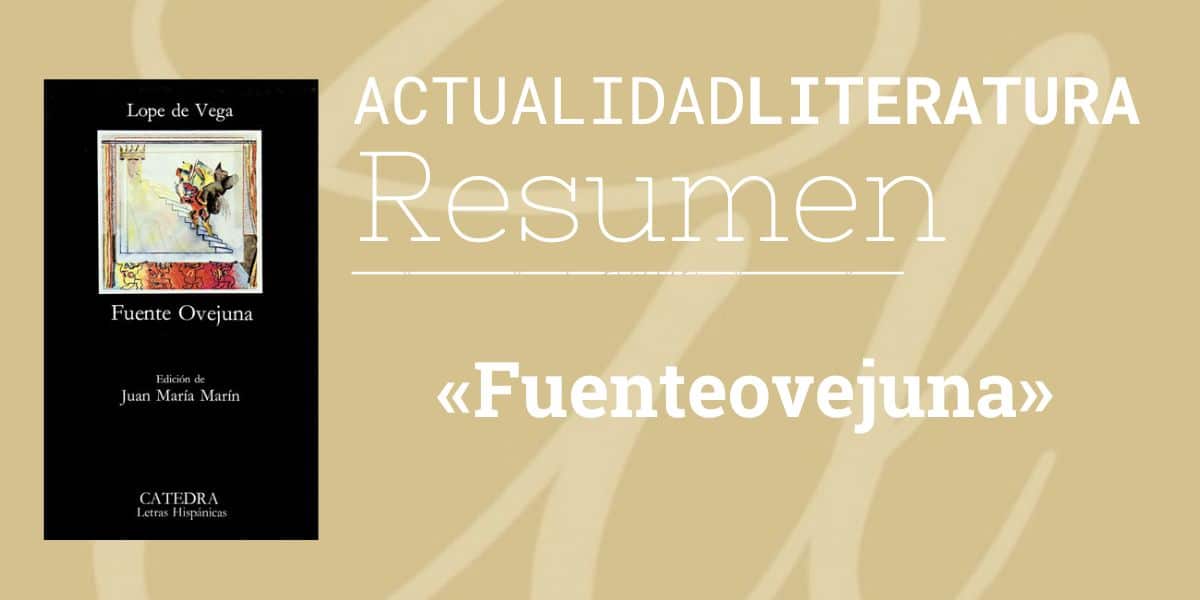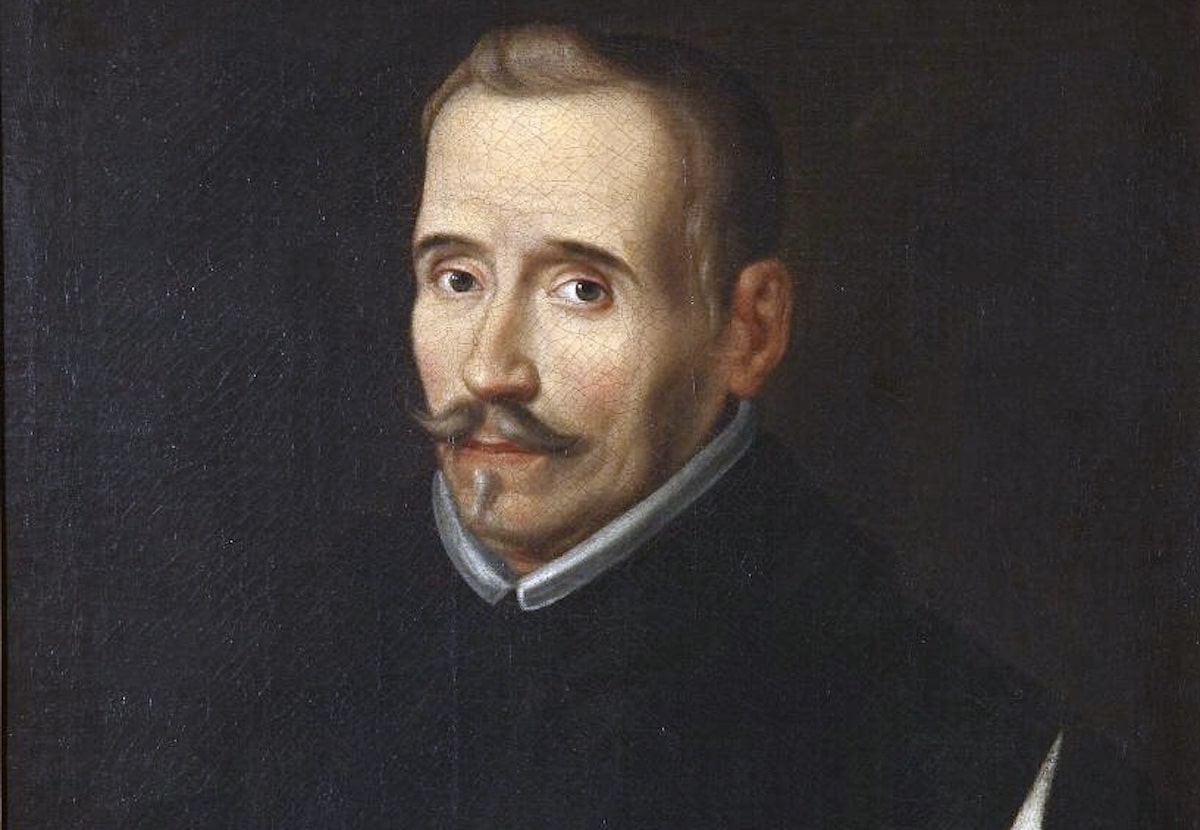
Fuenteovejuna
Fuenteovejuna is a tragicomedy divided into three acts. This play was written during the Golden Age —specifically, between 1612 and 1614— by the Spanish playwright Lope de Vega. Subsequently, the text was published in 1619, within the Dozena sic Part of Lope de Vega's Comedies. The book is considered one of the author's great dramatic pieces, along with titles such as Commander of Ocaña and The best mayor, the king y peribanez.
As with many of the works of the English writer and poet William Shakespeare, Fuenteovejuna has become the iconography of a social struggle: that of a people that unites to put an end to the injustice that harms and humiliates them, while taking away their dignity and value.
Summary of Fuenteovejuna
First act (The approach, 12 scenes)
an exceptional villain
Fuenteovejuna It is based on a real historical context. It runs the time of the Catholic kings, Isabel and Fernando —1474-1516—. Two plots, one social and one political, intertwine and accommodate the events. These take place in the Cordoba town of Fuente Obejuna. In principle, the narrative follows Commander Fernán Gómez de Guzmán, who is in Almagro, while he is having a conversation with the master of Calatrava.
Fernán is worried about the start of a war. The king just died and there are two factions that seek the coronation of a new queen: her sister Isabel, and a supposed daughter of hers named Juana. It is convenient for Gómez de Guzmán that Juana is electedFor this reason, he goes to see Calatrava's master, to convince him to fight by his side.
This man belongs to an influential religious organization that refuses to obey the orders of any king, because they are due only to their God. Nevertheless, After a play on words, Fernán persuades him to join her cause.
In Obejuna Fountain
In Fuente Obejuna there are only 500 inhabitants, and life usually goes by calmly. These lands belong to the Spanish crown, but the kings allow a Life Commander to use them in exchange for military protection. However, Fernán does not protect the villagers, but rather abuses them. It is in this context that we meet Pascuala and Laurencia.
The latter is the daughter of Mayor Esteban. The ladies comment that they are tired of the way in which the Commander treats women, whom he uses without discrimination to satisfy his carnal desires. In general, Fernán makes use of the right of seigneur — he kidnaps newlyweds and forces them to share his bed. This is a way to perpetuate the subjugation of the inhabitants.
The taking of Ciudad Real
The Commander and his servants arrive at Fuente Obejuna in the middle of the conversation of the ladies, proudly claiming his victory in Ciudad Real. At first, the inhabitants applaud his feat. However, the man decides to reward himself by kidnapping Laurencia and Pascuala. The ladies resist and flee. Fernán is surprised and angry.
Inside, he feels that it is his right, and that he will never forget such a rudeness. Meanwhile, the pretender to the throne, Isabel, and her husband Fernando, decide to send their army to recover Ciudad Real, in order to avoid the reach of Juana's troops and her allies. Fernán ignores this play, because he feels victorious. Later, the Commander finds Laurencia in the woods.
The conflict with lovers
Fernán believes that Laurencia is alone, but she is in the company of a young lover named Frondoso. Minutes before, the boy begged the lady to get married at once, but she didn't want to, because she thinks they should wait and ask her father for permission. Upon hearing the Commander's horse, Frondoso hides behind the trees.
Then Fernán approaches Laurencia and corners her with his crossbow.. However, Leafy leaves his hiding place, he takes the weapon and points it at the Commander, demanding that he release his beloved. The man is then left with no choice but to escape on foot, humiliated and unarmed.
Second Act (The Knot, 17 scenes)
Time after, the villagers hold an assembly. They talk about various topics and they cannot avoid commenting on the attempted rape that Laurencia suffered. When the mayor finds out about the grievance, the Commander returns to the town, and is timidly confronted by its inhabitants. Fernán Gómez reminds them that they have no honor for being commoners.
He also explains to them that their wives should feel lucky to have their attention. While the Commander discusses with his servants why the villagers have become so rebellious, New news arrives: Ciudad Real was recovered by Isabel and FernandoSo Fernán runs to investigate what happened.
Of good friends and long fights
Laurencia and Pascuala are in front of the lake, in the company of an amusing young man named Mengo. They confess to him how much they fear the Commander. In this instant, Laurencia also affirms that Frondoso is a great man, and that she admires the courage with which he defended her., although she is not yet ready to give him her hand. Minutes later, another villager named Jacinta arrives. The woman flees from the Commander's men, who chase her to try to rape her.
Next, Mengo asks the women to flee. Meanwhile, he stays behind to defend Jacinta. The first thing he tries is to talk to Fernán Gómez's men, but this doesn't work. The assistants ignore Mengo and punish him with lashes for daring to challenge them. After, They kidnap Jacinta and dispose of her at will, which infuriates the entire town.
The Commander's wedding and revenge
The mayor and the people of Fuente Obejuna they discuss the bad deeds of the Commander, and beg bye Bye what isabella —enemy of Juan and, consequently, of Fernán Gómez— win the war, because it would be a way to free the people from their misery. Later, Frondoso is encouraged to visit Esteban to ask for Laurencia's hand. The mayor, noticing the good heart of the boy, happily accepts.
Shortly after they organize the wedding. While this is taking place, the Commander is furious: Isabel's troops won the war, and Calatrava's master tells him that he will return to his people, leaving his alliance behind. Seeing that everything went wrong, Fernán returns to Fuente Obejuna to take it out on the town.
In what appears, he meets the wedding of Laurencia and Frondoso. Governed by anger, he arrests the boyfriend and kidnaps the young woman. When the mayor Esteban confronts Fernán Gómez, the Comendador snatches his cane and starts hitting him with it. All the inhabitants are enraged, but they are too afraid to say anything.
Third act (The denouement, 25 scenes)
Rebellion
When the Commander leaves with his hostages, the habitants of the town meet in an extraordinary meeting. They are tired of Fernán's terrible acts, and they decide to end the problem as soon as possible.. Some people affirm that they should leave the town, others, that the best solution is to go before the kings so that they put an end to Fernán Gómez. None provides a realistic solution.
then the poor Laurence appears in the middle of the session, battered and dirty. She had struggled with the Commander's men, who beat her viciously. However, the girl managed to escape alive. The young confront the villagers. For her, they are all cowards who allowed Fernán to reach those extremes, reminding them of all the misdeeds committed by the subject.
Revenge, solution and punishment
Laurencia, angry, proposes an extreme solution: kill the Commander. The villagers fire at his encouraging speech, and prepare with weapons and torches to hunt down the monster. All the inhabitants—men, women, old and young—go to Gómez's house, on the outskirts of the town. At first, the Commander pays no attention to them. He gives the order to hang Frondoso and calm down the mob.
But none of that has a place at that point. The villagers invade the house and kill the servants. The Commander, seeing the magnitude of the danger, decides to negotiate, and offers them the release of Frondoso. Even so, when the boy is freed he joins the crowd. The inhabitants of Fuente Obejuna destroy Fernán's house. After this event, finally, they all kill the man who mistreated them so many times.
The murderer was Fuente Obejuna
After killing the Commander, the entire town kills the remaining minions. All those who outraged Jacinta, whipped Mengo and other barbarities, were eliminated; However, one of Fernán's most loyal servants manages to escape. The man reaches Isabel and Fernando, and requests an audience. Wounded, he tells them the story from his perspective, demanding the death of the murderer and an exemplary punishment for the town.
The kings agree to this, so they send an investigative judge to investigate the matter. In the village, people celebrate the death of Fernán Gómez and the victory of the Catholic kings. At the same time, the marriage between Laurencia and Frondoso is consummated.
The verdict, the triumph of good
The people suspect that at some point an envoy from the kings will arrive to question them about the case. Given this, they plan what everyone will answer when asked who the murderer was. Arriving the judge questions them about the death of Fernán, to which he always gets the same strange response: "Fuente Obejuna did it, sir." There being no other reply, the man decides to resort to torture.
Pascuala is tied to a rack, Mengo, hanged. An old man and a child are tortured. Regardless of the ordeal of the 300 sullied people, all the villagers repeat: "Fuente Obejuna did it, sir." The judge is impressed by the union and willpower of the villagers, thus returning empty-handed. Subsequently, he presents his report before the kings.
pardon or death
The judge reminds their majesties You have only two options: or forgive to the commoners, o the they kill to all. At that moment, the kings request the presence of the accused.
When the villagers arrive at the palace, they are amazed by the beauty of the place. So, Isabel asks if those people are the aggressors, and these explain to the queen all the evil that the Commander caused them, firmly holding the answer granted to the Judge: that It was Fuente Obejuna who murdered Fernán.
The kings are stunned by the great strength of the people. After deliberating, they decide to spare them all. Their Highnesses add that, for the time being, they will not be assigned a Commander, and that the lands will be used only by the monarchs. The townspeople are delighted with the verdict, as they adore their new rulers.
About the author, Félix Lope de Vega

Felix Lope de Vega Carpio He was born in 1562, in Madrid, Spain. He is one of the most representative writers of the Spanish Golden Age. The same way, the prolificacy of his work makes Vega one of the most relevant playwrights in all of universal literature.
It is usually considered that Lope de Vega —The phoenix of the wits— was one of the greatest exponents of the Spanish Baroque. This author was also one of the greatest lyricists in the Spanish language. Thanks to his great creative capacity, he wrote novels and extensive narrative titles in prose and verse. This material remains current, and continues to be represented in theaters around the world.
Some of the most important works of Lope de Vega
- The discreet lover (1604);
- The steel of Madrid (1608);
- La dama boba (1613);
- El Perro del Hortelano (1618);
- punishment without revenge (1631)

the best summary in the world